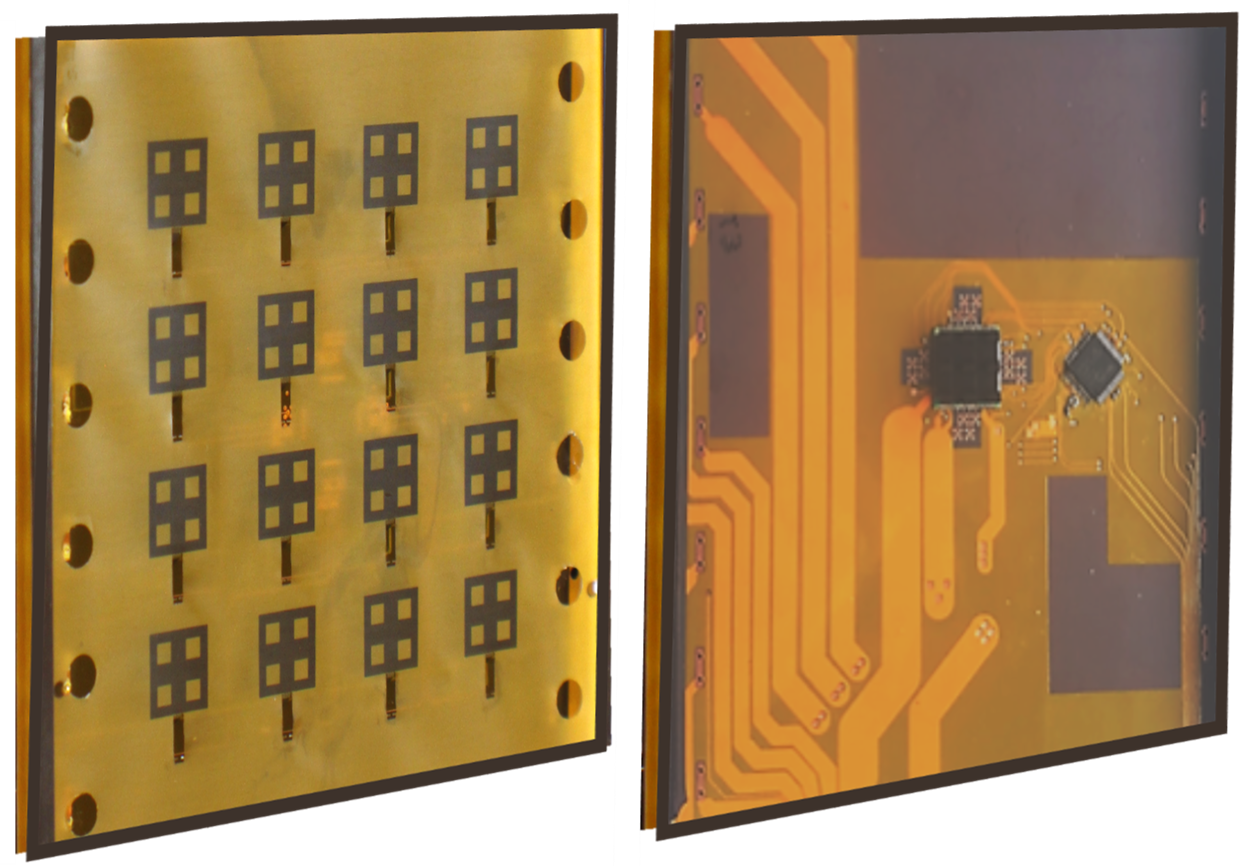A flexible phased array system with low areal mass density
Published in Electrical & Electronic Engineering

At Caltech High-speed Integrated Circuits (CHIC) laboratory, we have demonstrated an ultra-lightweight flexible phased array architecture that is rollable, foldable, collapsible, and conformable. It has many potential applications from RF-active fabrics to space-based communication, sensing, and power transfer. Owing to their multi-element nature phased arrays can perform electronic beam-forming and beam-steering by controlling the phase and amplitude of each element introducing constructive and destructive radiation interference. Phased arrays are more superior to large radiators that rely on mechanical beam-steering, and they are widely used in radar and communication systems. However, traditional phased array systems are generally rigid, bulky, heavy, and cost inefficient which limits their use in compact or portable devices and systems. This becomes a major limiting factor especially in the case of space and solar-based applications where the cost of the system is heavily dominated by the cost of the vehicle launch which is directly influenced by the system mass.. The presented dynamic and self-contained flexible phased array architecture consists of a self-monitoring complementary metal oxide semiconductor (CMOS) based integrated circuit power synthesis and control unit (PSCU) responsible for synthesizing multiple independent phase and amplitude controlled, high power signal channels combined with flexible and collapsible/deployable robust radiating structures. Our architecture avoids the downsides of using a conventional dielectric and enables compact storage by using a collapsible air gap dielectric.

Our phased array consists of a flexible multilayer polyimide circuit board with the PSCU separated by the air/vacuum gap dielectric from a sheet of radiators realized using a single polyimide/conductor layer. The presented flexible phased array platform is modular, scalable and capable of operating stand-alone or as a subarray in a larger scale flexible phased array system. When used in a large scale array, the architecture allows for the array to be collapsed and rolled compactly for storage and transportation. When it is needed the array can be self-deployed and profiled to a conformal surface and operated efficiently. Such a unique mode of operation enables a broad range of novel applications beyond the conventional radar and communication phased arrays systems. This would engender a new paradigm for communication, sensing, and power transfer spacecraft, portable communication and emergency systems, wearable devices, and real-time adaptive and dynamic conformal systems.
We devised and demonstrated a 4x4 flexible phased array tile operating at 10 GHz to illustrate the capabilities of the presented flexible phased array system. The proof-of-concept prototype has a record low active region areal mass density of 0.1 g/cm2. An application of the phased array for wireless space-based solar power transfer was demonstrated by combining the phased array with a concentrator-based photovoltaic solar cell to create a self-contained power collection and transfer unit.

The detailed study has been published and can be found in the following Nature Electronics article,
https://www.nature.com/articles/s41928-019-0247-9
Follow the Topic
-
Nature Electronics

This journal publishes both fundamental and applied research across all areas of electronics, from the study of novel phenomena and devices, to the design, construction and wider application of electronic circuits.

Please sign in or register for FREE
If you are a registered user on Research Communities by Springer Nature, please sign in